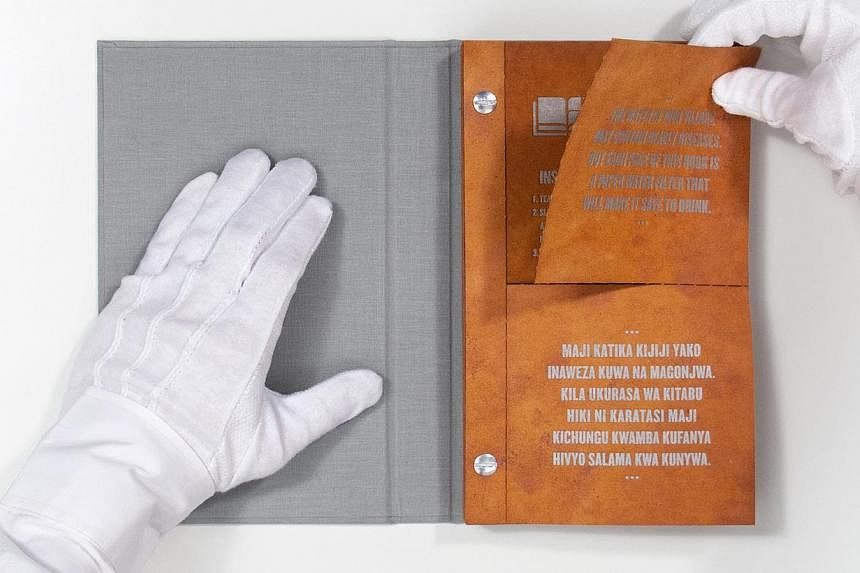When we imagine children walking to school, we might picture them holding a lunch box. We certainly do not think about them toting a container of contaminated water.

But that is exactly what happens in Ghana's Tolon and Kumbungu districts, according to Mr Iddrisu Abdul-Aziz Boare, who directs the country's WaterIsLife office. "Eight out of 10 children in almost every school in these districts carry contaminated water for drinking while in school," he said.
In Ghana, as in other developing countries, children and adults often lack knowledge about the dangers of drinking contaminated water, which can lead to diseases such as cholera, dysentery, hepatitis A and typhoid.
According to non-profit organisation Water.org, about 3.4 million people die every year from water-related diseases. But up until now, water filtration methods have been costly or not particularly easy to use. Now, there is the "Drinkable Book".
"It is important to design a water filter tool that will be embraced and used by individuals and communities in need," said Ms Kristine Bender, president of WaterIsLife, a charitable organisation based in Edmond, Oklahoma, in the United States.
"A book is a treasured possession, and one that stirs emotion and feelings. This is a brilliant and innovative execution of a simple tool to provide life's most basic need - clean water."
How does a book filter water?
As with any book, this one begins with pages, and these can be traced back to the laboratory of chemist Theresa Dankovich.
Several years ago at McGill University, she created an anti- bacterial water filter using paper coated with silver nanoparticles, which kill the microbes found in deadly waterborne diseases.
In 2009, she was able to show that using the silver-laced paper kills 99.9 per cent of bacteria in "really, really gross water, comparable to sewage water".
The result was as clean as US tap water. Each filter costs only pennies to make and lasts for 30 days.
"The book idea started last summer when Brian contacted me," Dr Dankovich said, referring to designer Brian Gartside who had been developing conventional campaigns for WaterIsLife at advertising agency DDB New York.
The paper is sturdy and feels like a very thin cardboard. Although it is initially white, reactions with the silver nanoparticles turn it bright yellow, and it then deepens to a darker orange.
The pages are divided into two pre-perforated square filters. The top one has a message in English, and the bottom one in the local language, such as Swahili for Kenya. Each book contains 24 pages, enough to last for four years.
Starting next year, once books are funded and produced, WaterIsLife will begin distributing them to villages in Haiti, Kenya, India and Ghana.
The long-term goal is to create books for each of the 33 countries where WaterIsLife works.
Down the road, the books might even appeal to people in developed countries who want to filter water, such as backpackers.





